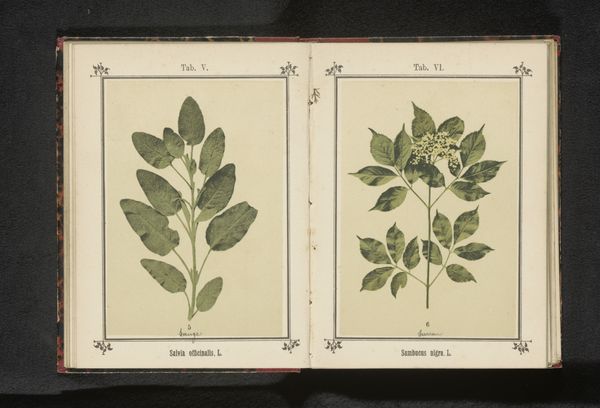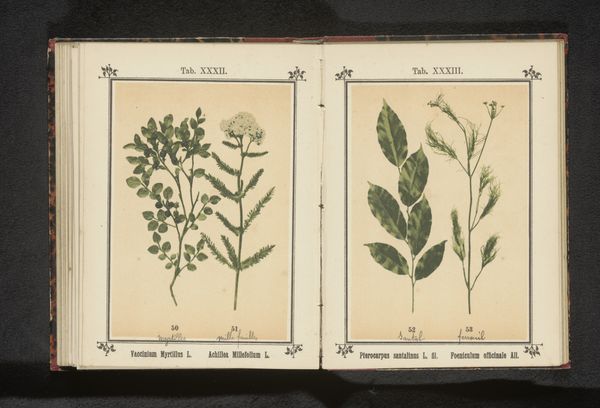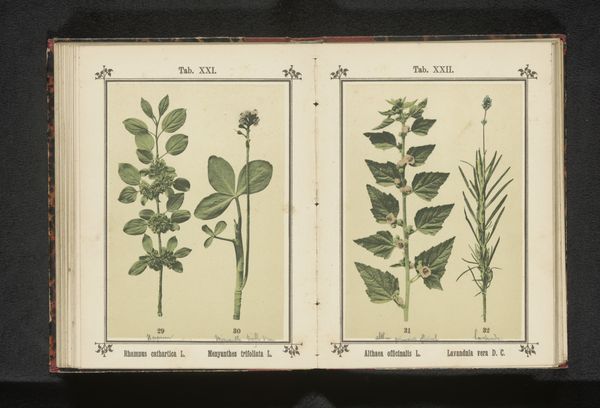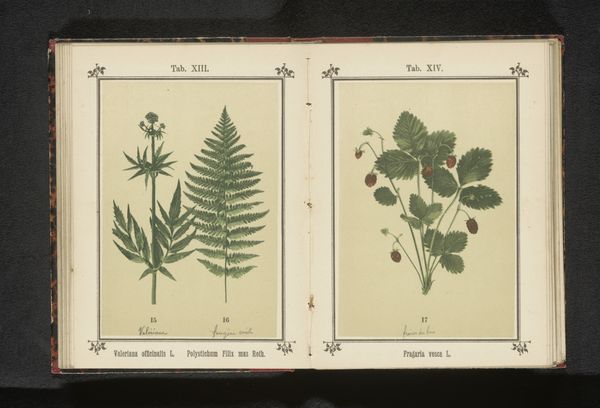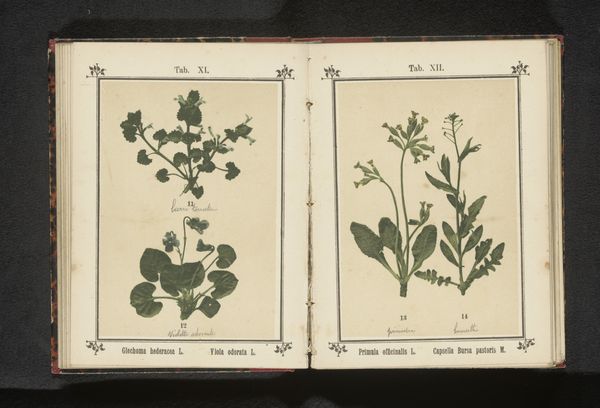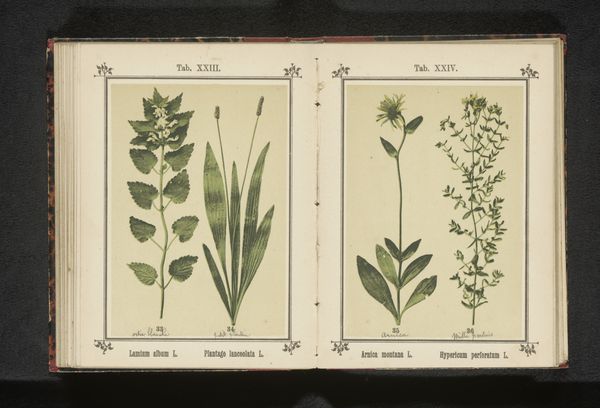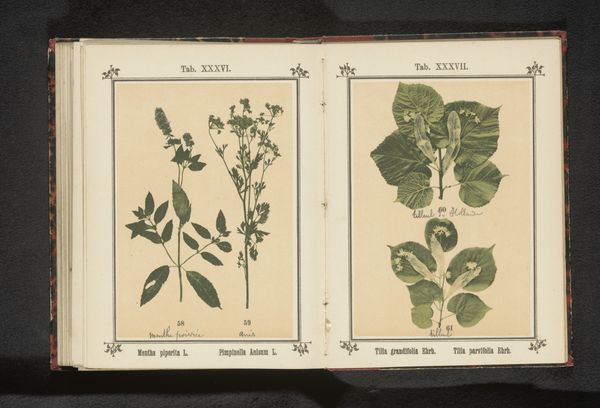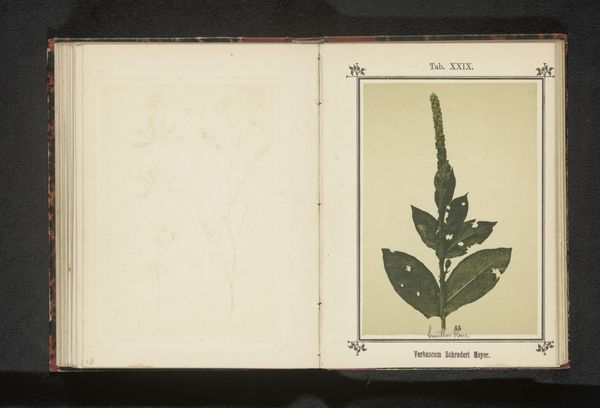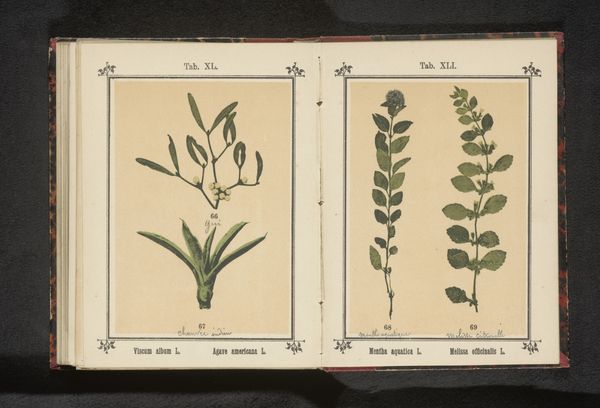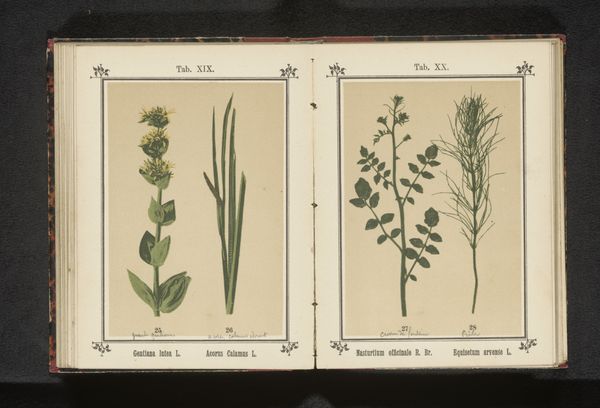
drawing, print, woodcut
#
drawing
#
ink paper printed
# print
#
coloured pencil
#
woodcut
#
history-painting
#
academic-art
#
naturalism
Dimensions: height 136 mm, width 95 mm
Copyright: Rijks Museum: Open Domain
Editor: We're looking at a plate from what seems to be a botanical book. It shows a walnut branch. It's titled "Tak van een walnoot," dating from before 1894, and made with a mix of woodcut and colored pencil on paper. It strikes me as so delicate, and maybe even a little haunting, like a preserved memory. What catches your eye when you look at this? Curator: Haunting is a beautiful way to put it! It does feel like a captured moment, doesn't it? I'm struck by the artist’s dedication to rendering the details of nature so precisely. I get lost wondering what world this artist inhabited, what their motivations were to capture these seemingly humble specimens. Was it pure scientific record, or something deeper, more emotive? What do you think is the purpose here? Editor: Well, seeing as it's also made with colored pencil, my impression is less 'scientific illustration' and more an artistic rendering of the plant's natural beauty, a subjective impression as you hinted. It almost elevates the branch, giving it significance. Curator: Yes! Precisely! You’ve hit upon something key. Before photography truly took hold, these artistic interpretations were crucial for sharing knowledge *and* wonder about the natural world. Think of the skill needed to translate something living into these mediums! Do you find yourself drawn to the naturalism of the image, or perhaps the history in it, or something else? Editor: I think it's the quiet beauty. Before, I saw something sad, but looking at it with you now, I think "serene" is perhaps a better description. It really highlights how perception changes with context, which is why these conversations are helpful. Thanks for that insight. Curator: My pleasure. And thank you. I’ll certainly think about botanical illustration differently, with more patience for those hidden meanings in everyday natural objects.
Comments
No comments
Be the first to comment and join the conversation on the ultimate creative platform.
